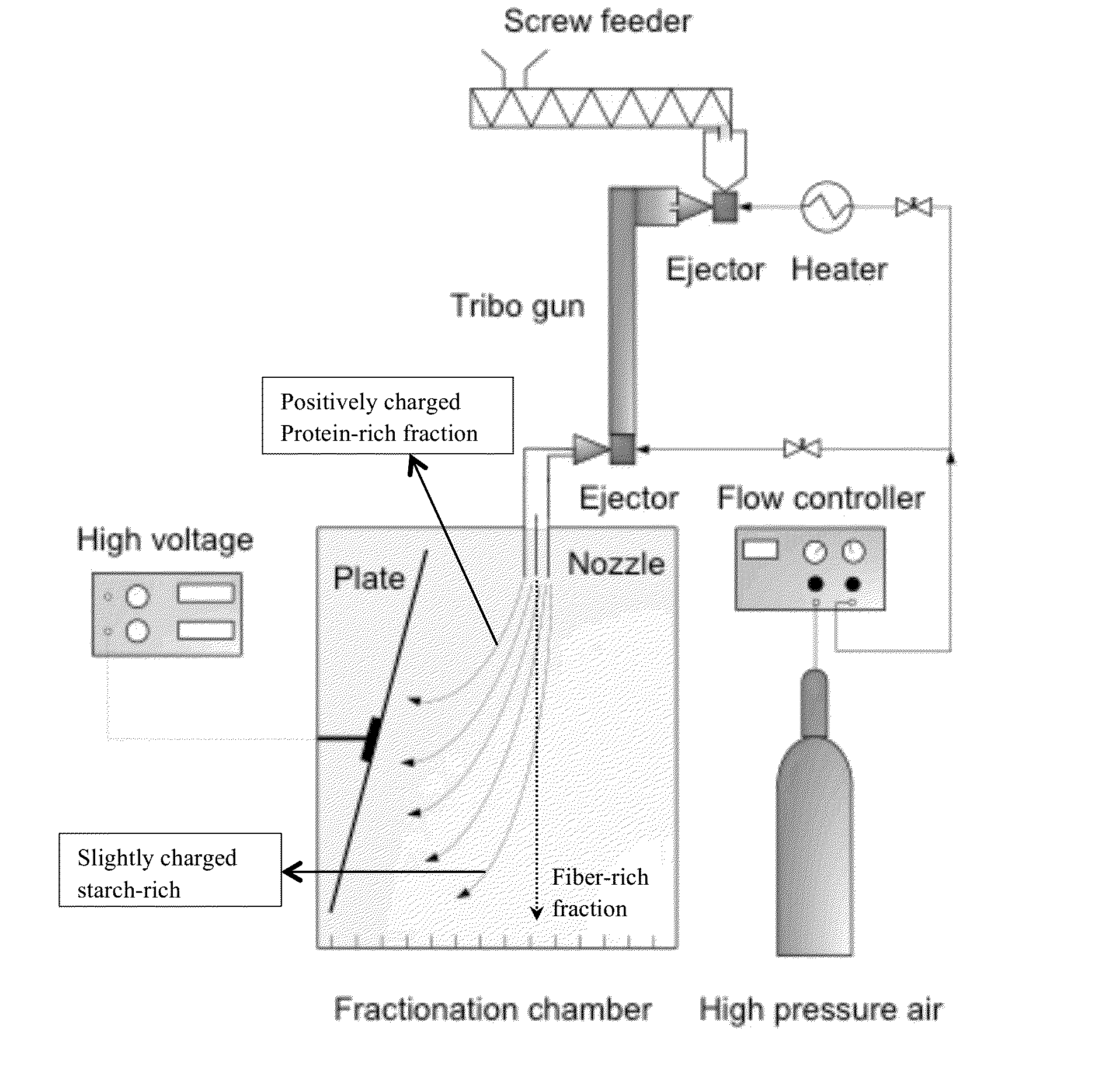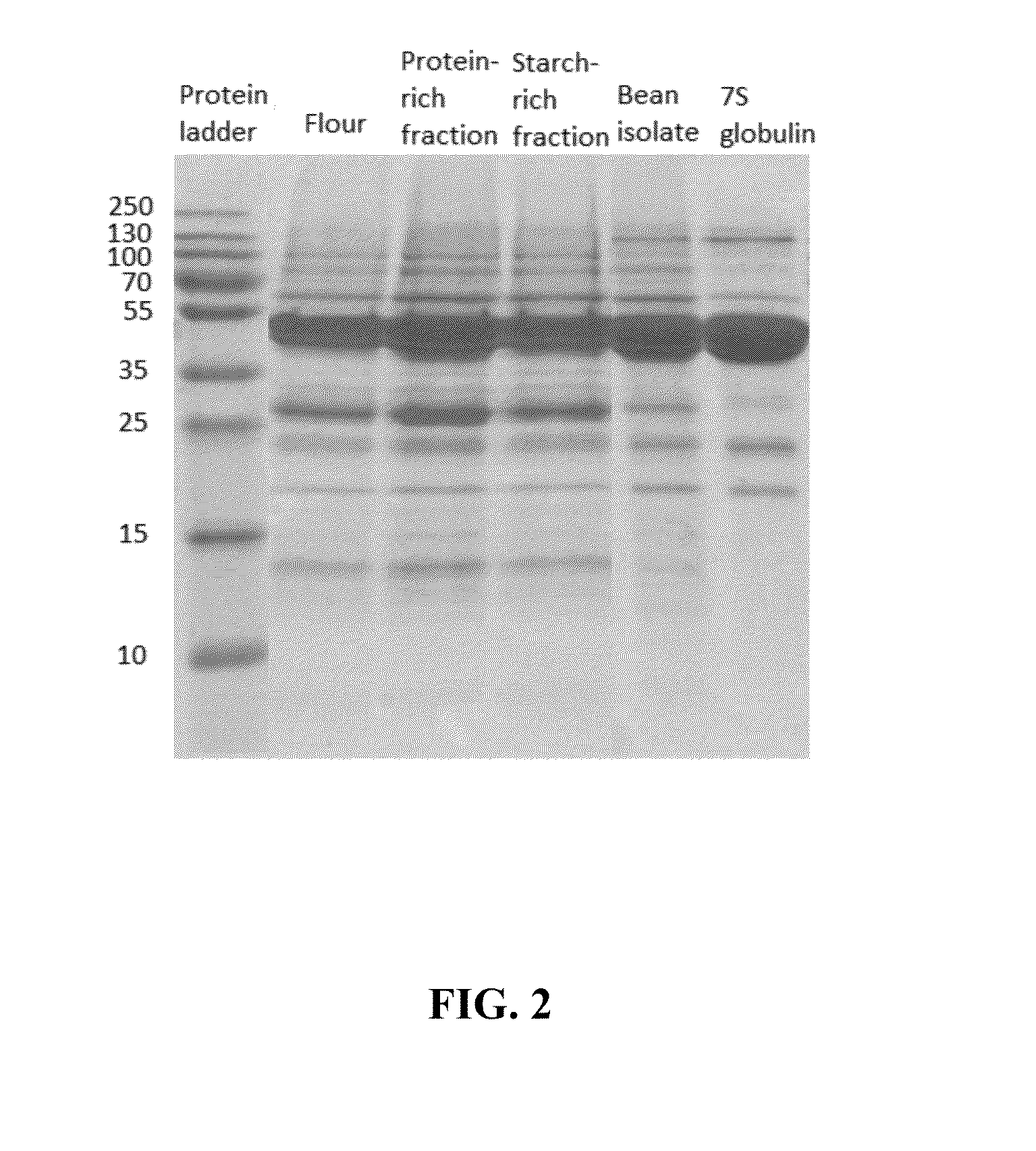Solvent-free approach for separation of constituent fractions of pulses, grains, oilseeds, and dried fruits
a technology of solvent-free approach and constituent fractions, applied in the field of solvent-free process, can solve the problems that the technology of separating pulses, grains, oilseed flours and dried fruits into protein and starch, fiber-enriched fractions, etc., and achieves the effects of low affinity, high energy state, and high work function
- Summary
- Abstract
- Description
- Claims
- Application Information
AI Technical Summary
Benefits of technology
Problems solved by technology
Method used
Image
Examples
example 2
[0056]Pin-milled Navy bean flour (Hosokawa Alpine pin mill) was screened by sieving (125 μM) so as to obtain a fraction with particle sizes below 125 μm. The sized fraction then underwent the same drying, charging and separation steps as described in Example 1. The configuration of the setup and operating conditions were as the same as described in Example 1.
[0057]The results of separation are as follows:
TABLE 3Result of separation for example No. 2% protein by weightRecoveryFeed or fractionson dry basis(w / w %)Navy bean flour24—Navy bean fraction (26—Protein-rich fraction5238Starch- and fiber-rich fraction1362
example 3
[0058]Disk-milled Quinoa flour underwent the same drying, charging and separation steps as described in Example 2. In this example, the voltage of electrode was set to −2 kV.
[0059]The results of the separation are as follows:
TABLE 4Result of separation for example No. 3% protein by weightRecoveryFeed or fractionson dry basis(w / w %)Quinoa flour14—Protein-rich fraction2247Starch- and fiber-rich753fraction
example 4
[0060]The protein profile of pin-milled navy bean flour and separated fractions from Table 1 was compared with those of navy bean isolate and 7S globulin, using Sodium dodecyl sulfate polyacrylamide gel electrophoresis (SDS-PAGE). To extract proteins from powder samples, navy bean flour or collected samples (5 w / v) were suspended in 0.02% NaOH solution and were shaken in water bath (50° C.) for 2 h. The samples were then centrifuged at 14000×g for 15 min and supernatants were collected for analysis.
[0061]As shown in FIG. 2, the protein profile of fractions separated by the dry process is very similar to that of bean flour, implying that the novel process preserves the protein distribution of the flour. However, the protein profiles of navy bean isolate, prepared by acid precipitation at its isoelectric point, and isolate 7S globulin, extracted under acidic condition pH=2, are devoid of certain bands, especially for proteins with MWs of less than 15 kDa. These bands mostly represent ...
PUM
 Login to View More
Login to View More Abstract
Description
Claims
Application Information
 Login to View More
Login to View More - R&D
- Intellectual Property
- Life Sciences
- Materials
- Tech Scout
- Unparalleled Data Quality
- Higher Quality Content
- 60% Fewer Hallucinations
Browse by: Latest US Patents, China's latest patents, Technical Efficacy Thesaurus, Application Domain, Technology Topic, Popular Technical Reports.
© 2025 PatSnap. All rights reserved.Legal|Privacy policy|Modern Slavery Act Transparency Statement|Sitemap|About US| Contact US: help@patsnap.com



